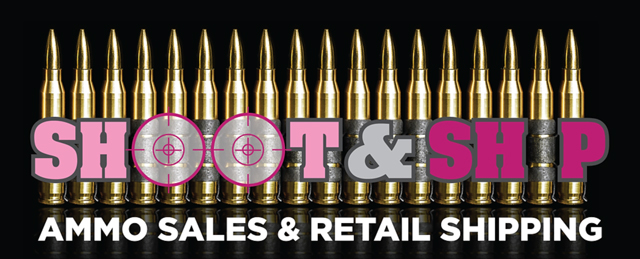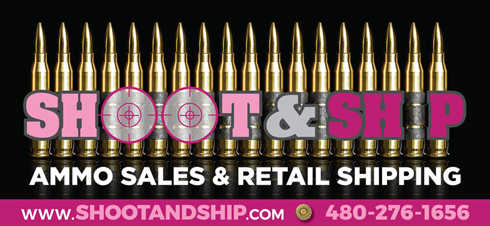Shooting Range Guides
This guide on range bag essentials will help you properly prepare for a day at the shooting range. If you’re a first-time gun owner or beginner who hasn’t been to the shooting range yet, it can be a bit intimidating. However, if you follow basic firearm safety rules and come equipped with the right gear, you’ll enjoy every minute of target practice. We’ll break down what to pack in your range bag and what to wear to the gun range so that you can make the most out of your visit.
Call Now 480.276.1656
Shooting range
What Should You Bring to a Shooting Range?
Whether you’re visiting an indoor or outdoor shooting range, the following range bag checklist contains the most important shooting gear that you need to have on hand.
Range Bag
Before we talk about gear, you need to know where you’ll put it. Choosing the best range bag for your needs is relatively simple, as long as you focus on these three qualities:
Size
Durability
Comfort
The size of your range bag mostly depends on the type and number of guns you’ll bring. Range bags come in many sizes, from small shoulder bags for pistols to large duffel bags for rifles and shotguns. Bigger bags can be harder to carry and store, so keep that in mind while shopping for range.
Your firearms are valuable, and a durable range bag will protect your prized possessions. A bag made with 500-600D nylon or polyester should do the trick, and there are bags with higher thread counts if you want the toughest pack for your gear.
Lastly, don’t overlook comfort when choosing a range bag. They can get quite heavy when filled to the max, so make sure your bag has a padded shoulder strap and even weight distribution to avoid physical strain.
Firearms
Most shooting ranges offer gun rentals and renting a gun at the range is a great way to test out firearms you’re interested in purchasing. However, firing your own weapon at the range helps you become more familiar with it and is recommended for practice, especially if you haven’t used it much.
Make sure to pick up a high-quality gun case to protect your weapon. Throwing your firearm in with the rest of your range bag essentials is a recipe to ruin its finish. Gun cases are also great for discreet carry and will prevent bystanders from panicking if the contents are exposed. What’s more, most states legally require you to transport your firearm in a gun case.
Training with a holster is a great way to practice draws, but not all ranges allow you to holster weapons. Make sure to call ahead of time to check if the range you plan to visit permits holsters.
Gun Cleaning Kits and Maintenance Tools
Gun cleaning kits and firearm maintenance tools belong on your range bag checklist. Weapon malfunctions can frequently be fixed with a quick cleaning or tune-up, and with the right supplies on hand, you can address the issue without leaving the range.
Multi-tools are compact and provide tons of utility for field maintenance while barely taking up space in your range bag. You can also clean your weapon immediately after use if you prefer.
RANGE BAG ESSENTIALS
Protective Gear
The most important range bag essential is protective gear. Safety is the top priority at shooting ranges, and you need proper hearing and eye protection that won’t impact your shooting ability. You can purchase these items individually or buy a shooting range kit that includes ear protection, eye protection, and other range accessories.
Hearing Protection and Eye Protection
Guns are loud. VERY loud. According to the American Speech-Language-Hearing Association, exposure to noises over 140 decibels (dB) can permanently damage hearing. A small .22-caliber rifle can produce around 140dB, and that only grows louder with bigger guns. Ear protection is even more important at indoor ranges since their open design can amplify noises.
There are three main types of hearing protection:
Passive earmuffs
Electronic earmuffs
Ear plugs
Electronic earmuffs offer ample protection and allow you to hear lower dB noises such as conversation. However, they are the most expensive option. Ear plugs are a popular choice because they’re inexpensive and take up minimal space in your range bag. Some shooters like to “double-up” their ear protection with both plugs and muffs. You can choose any of these options, as long as they are rated at 30dB protection or better.
Eye Protection
Shooting glasses are a must for any range visit, but your driving sunglasses aren’t gonna cut it. You need eyewear that offers excellent ballistic and impact protection. Make sure to buy a pair with ANSI Z87.1 ballistic rating or better.
Shooting Gloves
Shooting gloves aren’t a necessity like eyewear or earmuffs, but they can protect your hands from abrasion with handguards and are recommended for outdoor ranges in cold conditions.
First Aid Kit
A responsible gun range should have emergency supplies on hand, but it is never a bad idea to have a kit of your own nearby,
Range Bag Essentials: Ammunition
Can you bring your own ammo to the range?
Most ranges allow you to bring your own ammo. Just make sure to research any restrictions before visiting a specific range. Steel cores and flammable tracers are usually not permitted for use at indoor ranges. Gun ranges usually don’t permit reloaded ammunition, and most won’t allow you to shoot your own rounds with a rental gun. Ammo at the range is usually sold at a marked-up price. If permitted, you’ll save tons of money by buying your ammo beforehand.
Ammo Boxes
If you’re bringing your own rounds, ammo boxes belong on your range bag checklist. They help you safely store and transport your ammunition, keeping it dry and protected from the elements. Metal cans are heavy yet incredibly durable. On the other hand, plastic ammo crates are significantly lighter but may not last as long. It all depends on your preferences, but either option is a good choice for protecting cartridges.
Magazines and Speed Loaders
It’s best to come to the range prepared with extra magazines to save time. You’re there to practice and have fun, not reload mags all day. You can also bring mag pouches to protect your magazines and stay organized, and you can equip them for fast, easy access to your ammo.
Speed loaders are an excellent way to save time and effort at the range. A good speed loader makes reloading a drastically quicker and easier process. The only downside is that you need a speed loader matched to your caliber, so if you’re shooting a variety of cartridges, you’ll need a different speed loader for each.
What to Wear to a Gun Range
Wearing proper clothing to the range is key to a safe and successful outing, and you can probably put together the perfect range outfit with what’s in your closet now. When choosing apparel for a gun range, you want to focus on durability and mobility while avoiding loose clothing at all costs.
Hot ejected brass casings can find their way down a loose or low-cut top, and it WILL HURT. If this happens, you’ll most likely start dancing around and wincing in pain while holding a firearm… not a good look or a safe one. Wear tight-collared shirts to avoid this from happening.
Closed-toe shoes are also a must for the same reason above. Save the flip-flops for the beach. It is best to have a pair of shoes dedicated for range use, as there are expelled particles and lead at the range that your shoes can track into your car and home.
Tactical pants are a good choice for any shooting activity. They are remarkably durable, built for enhanced mobility, have numerous pockets for magazines and other gear, and have sturdy belt loops that can support holsters and magazine pouches.
Other Shooting Range Accessories
Here is some other shooting gear you should consider bringing to the gun range:
Shot timer or chronograph
Pen and paper
Targets
Staple gun or clothespins
Tape
Compact flashlight
Brass catcher
Spotting scope
Hand sanitizer and cleaning cloths s
Water and snacks
Some gun ranges let you bring your own targets, which you’ll need a staple gun, clothespins or tape to set up. Tape is also useful for covering up bullet holes so you can reuse targets. A lot of indoor ranges can be dimly lit, a handheld flashlight helps you quickly find your range bag essentials or items that fall on the floor.
Spotting scopes are mainly useful for outdoor ranges and long-distance shooting. Keep hand sanitizer and cleaning wipes in your bag to remove lead and other particles before touching your other gear.
Home Is the Range
Proper preparation is a sure way to stay safe and have a blast at the shooting range. With these range bag essentials in mind, you’re ready to pack your gear bag and take down some targets. As a reminder, here is a complete range bag checklist of items you should bring for a day at the range:
Range bag
Firearms
Gun cleaning supplies and tools
Ear protection
Eye protection
Shooting gloves
First aid kit/emergency supplies
Ammunition and ammo boxes
Magazines and speed loaders
Proper clothing (tight collars, closed-toe shoes, etc.)
Shooting range accessories (for practice or comfort)
We hope this guide helped you learn what essentials to pack for a day at the gun range. The range is a fun and effective way to improve your shooting habits.

